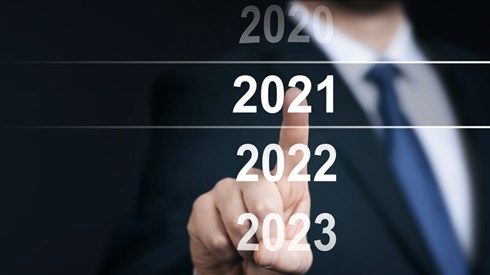Social Inflation Proving a Major Factor in Driving Up Claims Costs

March 16, 2022

Social inflation manifesting itself in large jury verdicts and claims payments has become a serious concern for both traditional market insurers and captive insurance companies.
"When we talk about social inflation, inevitably the conversation flips around to the large claims verdicts," said Robert Walling III, principal and consulting actuary at Pinnacle Actuarial Resources.
Mr. Walling and others discussed the issue of social inflation and its impact on captive insurance companies as part of a session titled "Impacts on Captives of Economic and Social Inflation" during the Captive Insurance Companies Association 2022 International Conference.
Mr. Walling explained that while "economic inflation" is defined as a decrease in the purchasing power of money reflected by a general increase in the prices of goods and services, "social inflation" is inflation that isn't explained by general inflation, such as some of the factors underlying increasing court awards.
"What's interesting about social inflation is it cuts both ways," Mr. Walling said. "It can actually be negative." He cited the example of safety initiatives that are noneconomic factors that can contribute to reductions in workers compensation claims severity.
Another panelist, Colin Donovan, president of STICO Mutual Insurance Company, A Risk Retention Group, said social inflation has been making it increasingly difficult for his organization to achieve its typical claims strategy.
"Our approach to claims historically has been to try to settle claims whenever possible," Mr. Donovan said. "That's become increasingly challenging."
Mr. Donovan said that for his risk retention group, "large claims" are those in excess of $100,000. Between 1988 and 2022, STICO had 43 large claims, he said. Those claims included 1 warranty claim, 14 pollution liability claims, and 28 commercial general liability (CGL) claims, he said.
Since 2012, however, all of STICO's claims exceeding $100,000 have been CGL claims, Mr. Donovan said. And STICO'S three largest claims include a $2.89 million general liability bodily injury claim in 2017, a $1.49 million general liability property damage claim in 2005, and a $1.24 million general liability property damage claim in 2012.
"Our frequency is growing, our severity is growing among those large claims," Mr. Donovan said. "We know now that if there is a bodily injury involved, our claim starts at $200,000."
While STICO's legal expenses have remained fairly consistent over the past 5 years, the size of settlements has increased, Mr. Donovan said.
Discussing factors driving increasing healthcare verdicts, Heather McClure, chief risk adviser in Aon's National Healthcare Industry Practice and former chief risk officer for OU Medicine, cited three primary causes: artificial inflation of life-care plans, litigation financing companies, and judicial "hellholes."
While litigation financing is increasing elsewhere in the world, the United States is the world's largest third-party litigation finance market, Ms. McClure said, accounting for 52 percent of global activity. She noted that the litigation finance industry produces significant returns for its investors, outperforming such other classes as private equity, real estate, credit, and hedge funds.
In addition, the plaintiffs bar is employing a number of tactics that are contributing to large verdicts, Ms. McClure said. Among them is "reptile theory."
Reptile theory involves encouraging jurors to become angry at and fearful of the defendant, she said. It leads those jurors to feel that their verdict can help protect the community from the defendant.
Other factors include desensitization among jurors to the size of verdicts, the impact of political polarization on jury pools, demonizing corporations, and the success of the plaintiffs bar in training lawyers to engage in emotional storytelling to juries, Ms. McClure said.
While the largest verdicts have come from states or regions considered "judicial hellholes," the size of verdicts is growing everywhere, Ms. McClure said. "Large claims are coming from everywhere," she said. "It's not just judicial hellholes. This is systemic."
The panelists offered several suggestions for defending claims and countering the impact of social inflation.
Ms. McClure said defense attorneys are catching up with the plaintiffs bar in terms of being collaborative and cohesive. Defense attorneys are increasingly sharing expert information, sharing trial tactics, and entering into joint defense commitments in multidefendant cases.
Companies can also look to early claims resolution programs as well as efforts to identify defensible claims to take to trial, if necessary, Ms. McClure said.
Creative capping of potential claims such as high-low agreements between the two sides in litigation can also limit social inflation's impact, Ms. McClure said.
The captive insurance company can play several roles as well, including investing in risk mitigation to reduce claims, providing data-driven analysis of claims, and investing in safety programs, she said.
Mr. Donovan said STICO has selectively increased general liability rates for insureds with large claims while trying to avoid blanket rate increases. The risk retention group is also strategically reducing limits in certain geographic markets or for certain types of insureds.
"You don't have to offer full limits to every risk that comes in your door," Mr. Donovan said.
He said there also are discussions in risk retention group circles of a public relations campaign targeted to jury pools, the plaintiffs bar, and mediators. The thrust of that campaign, Mr. Donovan said, would be along the lines of "We are a small member-owned insurance company. We're not the deep pockets you think we are."
March 16, 2022




